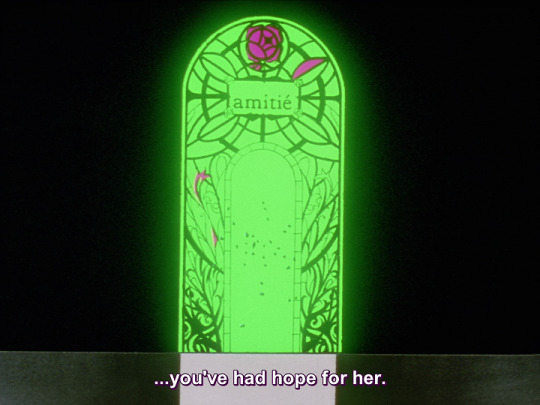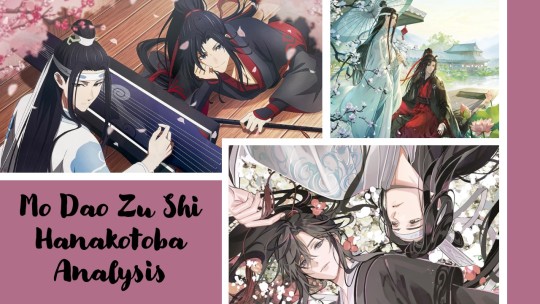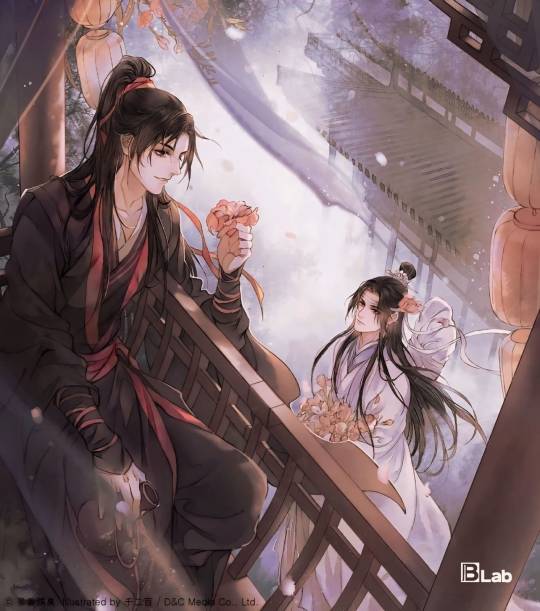#4 divine virtues
Explore tagged Tumblr posts
Text
Trusting God in Unfair Situations
Let’s face it: life is not fair. Sometimes it is unfair to our disadvantage, but at other times, it is unfair to our advantage. It is interesting how we are prone to cry foul when life is unfair to our disadvantage but are more than glad to accept and rejoice when it is unfair to our benefit. This inconsistency highlights the human tendency to be self-centered and myopic rather than God-focused…

View On WordPress
#biblical forgiveness#biblical humility#biblical justice#Biblical wisdom#blessings in adversity#Christ&039;s sacrifice#Christian conduct#Christian virtues#Deuteronomy 32:4#Divine Justice#Divine Mercy#divine promises#divine timing#Eternal Perspective.#fairness#faith in adversity#forgiveness#forgiveness as freedom#God&039;s faithfulness#God&039;s grace#God&039;s love#God&039;s perfect justice#God&039;s sovereignty#godly gratitude#godly response#grace versus fairness#gratitude#heavenly perspective#holy living#human perspective
0 notes
Text
Message from your Guardian Angels about your love life.. [Pick an Image]




Top Row Left to Right 1->2. Bottom Row Left to Right 3->4
What messages do your guardian angels have for you concerning your love life? Pick an Image and Go through your reading below.
================================================
Pile 1.
Patience is a Virtue – Divine Timing is at Play
"Do not rush what is meant to unfold in its own time. Love is not something you chase—it is something that finds you when your soul is truly ready. Every moment of waiting is not a delay, but a preparation. We are aligning you with someone who will match your energy, your heart, and your dreams. Trust in the unseen, and know that what is yours will never pass you by. In this time of waiting, fall in love with your own journey, and when love arrives, it will be more beautiful than you imagined."
================================================
Pile 2.
Build Your Life, and Love Will Follow
"Your future love is not separate from your purpose—it is intertwined. As you lay the foundation of your career and personal ambitions, you are also creating space for a love that will complement your growth, not hinder it. Do not wait for love to begin living fully. Find joy in your work, embrace your talents, and build a life that excites you. When love arrives, it will not be a missing piece but an addition to the abundant life you have already created."
================================================
Pile 3.
Your Circle Shapes Your Love Story
"Energy attracts energy. The people you surround yourself with will determine the love that comes into your life. Be mindful of your circle—choose those who uplift, inspire, and reflect the kind of love you desire. Avoid settling for environments where your heart does not feel at home. Your soulmate is not in places of doubt, fear, or chaos—they exist in spaces of light, growth, and alignment. Walk where your soul is honored, and love will meet you there."
================================================
Pile 4.
Become the Love You Seek
"The love you desire is already seeking you, but you must first align with its energy. Be the kind of person you wish to attract—cultivate kindness, patience, confidence, and self-respect. Do not search for love as if it is something missing; instead, embody the love you dream of. The more you nurture your own heart, the more effortlessly you will call in a partner who reflects your light. Love does not complete you—it amplifies the beauty that is already within."
===============================================
#pick a pile#pick a photo#psychic readings#guardian angel#love letters#love life#love language#love yourself
343 notes
·
View notes
Text

𝐀𝐩𝐨𝐭𝐡𝐞𝐨𝐬𝐢𝐬
uh-poth-ee-OH-siss
1. The action of ranking, or fact of being ranked, among the gods; transformation into a god, deification; divine status.
2. By extension: The ascription of extraordinary, and as it were divine, power or virtue; glorification, exaltation; the canonization of saints.
3. The deification, glorification, or exaltation of a principle, practice, etc.; a deified ideal.
4. In loose usage: Ascension to glory, departure or release from earthly life; resurrection.

939 notes
·
View notes
Note
Hello, I like your yandere self aware crk stuff, and I've been thinking of an idea.
A baker y/n that lands in beast yeast when the five beasts were first baked, y/n landed in the forest of beast yeast and wandered onto mystic flours pagoda first.
They're more confused then anything, as they're more level headed (this y/n is more calm), and meets mystic flour when she only has a few followers, and they wait in line and when they're last to meet the divine cookie, they don't wish for anything, just ask questions on where they are and a simple conversation and leave.
Then y/n stumbles on shadow milks area, and meets the virtue of knowledge, striking up a conversation and leaving, not asking for wisdom or anything. And this goes on with y/n wandering around beast yeast, meeting the 5 heroes and just talking with them before leaving, making the 5 cookies interested (and for some reason they want this non cookie more.....and more).
Then fast forward to the beasts becoming corrupted, and y/n walks to the ivory pagoda and notices nobody there, no lines....ONLY flour, and y/n knocks on the doorway into the pagoda and asks if MF is OK, only to see her appearance is different. Y/n gets bad feelings and slowly leaves, and this repeats for the other 4 beasts before y/n just high tails it for the fairie kingdom
kay so sorry for answering this after soo long 😭
hmm this idea is cool. I don't have a complete grasp of how the Beast cookies play out in my baker au yet but I do like this idea. The thought of the baker being this being that has been around since the beasts can open up so many doors to different scenarios of how the baker has been spending time in Earthbread. Also with the baker knowing and befriending the beasts before their corruption and witnessing the effects of the corruption of their beast friends and possibly even aiding in their imprisonment. And then when the beasts are released into the world after so many years, i can imagine the baker being frightened and doing anything they can to get away from the beast cookies and actively traveling from place to place to avoid being found.. but of course, the beasts will find them in the end.
A lot of possibilities with this. Thanks for asking this!
251 notes
·
View notes
Note
do u have anything on (historical) korean culture? specifically gender roles, clothes, and animal symbolism?
Writing Notes: Historical Korean Culture
TRADITIONAL KOREA
Origins of the Korean People. In prehistoric times the Korean peninsula was populated by nomadic peoples migrating from the Northeast Asian mainland, who developed settled agricultural communities around 4,000-5,0000 years ago.
Chinese historical records show the existence of tribal states in northern Korea and Manchuria (northeast China) before 1,000 BCE and parts of the Korean peninsula were occupied by Chinese military forces during the Han dynasty around the time of Christ.
According to Korean legend, a semi-divine figure named Tangun established the first Korean kingdom in 2,333 BCE and named his kingdom Choson, which was also the name of the last Korean dynasty (1392-1910) and the name for Korea currently used in North Korea (in South Korea, the name for Korea is Hanguk).
A number of important characteristics of traditional Korea remained well into the 20th century, and to some extent can still be seen today. These include:
a sense of cultural closeness to China;
the transformation of borrowed traditions;
limiting of outside influences and tendency toward seclusion;
social stability and hierarchy
OVERVIEW. The first half of the 20th century in Korean history is marked by two grave and painful experiences: the Japanese occupation between 1910 and 1945 and the Korean War of 1950–53.
These events dominate the collective national psyche for generations. The legacy of the colonial period is complex and fraught with emotion.
The Japanese colonialists’ push toward modernization brings tremendous technological, and consequently social, advances, such as the building of infrastructure and the development of modern school systems.
The Japanese also carry out the first modern archaeological excavations of ancient Korean sites (royal tombs, temples, ceramic kilns) and preservation of their artifacts.
On the flip side is the question of the colonialists’ intentions and their methods in these cultural endeavors, and more seriously, war crimes of torture, rape, and killing.
In the postcolonial period, Korea struggles with the issue of how to reconcile the positive developments of the colonial era and the unforgettable brutality, humiliation, and loss.
The second half of the 20th century witnesses rapid changes and developments in all aspects of (South) Korean society: economic, political, social, and cultural.
Astonishing economic progress—even through periods of political turbulence—enables a self-conscious and appreciative exploration of traditional Korean arts and active participation in international exchanges of culture.
In the 1980s and the ’90s, especially, South Korea expands its cultural presence around the world through the establishment of Korean galleries at museums and academic posts in Korean studies at universities.
GENDER ROLES. In traditional Korean society, women's roles were confined to the home.
From a young age, women were taught the virtues of subordination and endurance to prepare for their future roles as wife and mother.
Women, in general, could not participate in society as men did, and their role was limited to household matters.
The situation began to change with the opening of the country to the outside world during the late 19th century.
CLOTHING & FASHION. Korea, surrounded by waters on three sides, features 4 distinct seasons and more mountains than plains.
In these natural conditions, Korean people have developed unique and remarkable food, clothing, housing, and lifestyles.
To survive a harsh winter and the intense heat of summer, they developed distinctive clothing made of diverse materials, and various healthy dishes made with the mindset that health comes directly from food.
To adapt to the natural environment, they also developed a unique housing setup called hanok.
The Korean people learned to use various clothing materials, such as sambe (hemp), mosi (ramie), cotton, and silk, to make a range of clothing that was not only attractive but also provided them with effective protection even during the harshest winters and the hottest summers.
They made warm winter clothes using the technique of wadding soft cotton between two pieces of cloth, silk, or cotton fabric, and stitching them in fine lines, and produced cool summer clothes with hemp and ramie.
Hanbok is the traditional Korean attire made with these materials, typically featuring graceful lines and forms with a serene aura.
Korea’s traditional clothing, hanbok, has maintained its basic traditional features throughout Korea’s 5,000-year history while its styles and forms have evolved in various ways based on the lifestyle, social conditions, and aesthetic taste of the times.
History reveals that in general, Korean people in the past tended to prefer simple, white clothes to fancy ones. That is why they were often referred to as “the white-clad people” among their neighbors who admired them for being peaceful people.
Nonetheless, Korea has also had a long tradition of enjoying colorful clothes with complex designs depending on the period and the wearer’s social status.
ANIMAL SYMBOLISM. The often-mythical animals that adorned the palaces of feudal Korea were not merely decorative: They had deep layers of hidden meaning that spoke of the many virtues of the nation’s monarchs.
Animal-related metaphors are embedded into just about everything: tiles, decorative details on walls, paintings and wallpaper.
Animals had great symbolic meaning to Koreans, and East Asians in general.
Many of these animals were mythical or extremely rare in Korea, and included the likes of white deer, red rabbits and elephants.
Examples
The phoenix was thought to have one of a number of additional values depending on the color of its plumage and parts of its body. For instance, a white neck spoke of righteousness, while a black breast signified wisdom. Notable phoenix designs can be found at Gyeongbokgung Palace, one of the main palaces of the Joseon Dynasty (1392-1910).
The purity of the king’s heart, perhaps, was the virtue artists and royal court designers most sought to capture with another creature: a long-tailed white tiger with black spots. This animal was associated with extreme purity. It refused to eat anything that was alive, and would not even walk on living plants, such as grass and herbs. The beast would only appear in the presence of a particularly pure-hearted individual, legend explained.
Arguably chief among all of these animals, however, was the dragon, a creature associated with royalty in many parts of Asia. This is particularly noticeable in Korea’s royal palaces, however. The animal was believed to have the power to cause the wind to blow and the rain to fall―just like the kings of pre-Joseon times, who were thought to have benevolent powers over the weather.
Stone Warrior, the Guardian of the Royal Tombs. The Royal Tombs of the Joseon Dynasty feature one or more semispherical mounds protected with curbstones set around the base and elaborately carved stone railings and stone animals such as a lamb and a tiger, in particular, both of which represent meekness and ferocity.
The Story of the Twelve Animals of the Korean Zodiac.
The Rat, symbolizes diligence, fortune, fertility and abundance.
The Cow represents patience and obedience; it can also symbolize cold energy that begins to surrender by itself.
The Tiger was long deemed to be a symbol of holiness and Korea itself.
The Rabbit was an emblem of longevity and the vital essence of the moon.
Among all existing animals, the Dragon was considered the animal of the highest authority.
The Snake symbolizes wisdom and resurrection.
The Horse symbolizes dynamic power and vitality.
The Sheep symbolizes composure and peace.
Ancestors are presumed to have aimed to emulate and learn from the Monkey's wisdom and wit.
The popular belief was that the Rooster embodies 5 virtues: politeness (文) because of its comb; military bravery (武) because of its spurs; courage (勇) because it is a fearless fighter; benevolence (仁) because it shares its grains; and reliability (信) because it crows at the break of dawn with unchanging regularity.
The Dog was believed to be able not only to dispel plagues, goblins, and ghosts but also protect people against them.
Since ancient times, the Pig had been regarded as a sacred offering to gods, a source of fortune and happiness.
Sources: 1 2 3 4 5 6 7 8 ⚜ More: Notes ⚜ Writing Resources PDFs
You can find more details in the sources. Hope this helps with your writing!
#anonymous#korean#culture#writeblr#writing reference#literature#dark academia#writers on tumblr#spilled ink#writing prompt#creative writing#light academia#writing notes#history#animals#writing resources
57 notes
·
View notes
Text
Random Vedic Astrology Observations
Adele who is Ardra Rising and Lana Del Rey who is Ardra Sun both have a Paradise tattoo on the side of their hand

This is very interesting symbolism because Ardra nakshatra is preceded by Mrigashira nak which follows the fall from Paradise.
2. Pisces natives 🤝🏼 sculptures







L to R
Rihanna- Revati Stellium (including Moon & Rising)
Ava Gardner- Ketu in (1 degree Pisces) Purvabhadrapada
Bella Hadid- Ketu in UBP
Rosie Huntington Whiteley- UBP Mercury & Rahu, Mars in Purvabhadrapada (0 degrees Pisces) and Jupiter in Revati atmakaraka
Jin- UBP Moon
Isabelle Adjani- Revati Rising
Salma Hayek- UBP Moon
3. Jyeshtas really love jewellery




Vidya Balan- Mercury in Jyeshta (atmakaraka)
Rekha- Jyeshta Rising
Kim Kardashian- Jyeshta Rising
Nicki Minaj- Jyeshta Sun
4. I'd earlier made an observation about how Mars influenced men tend to go after older women and I thought I'd add a few more examples to that list!!

Sachin Tendulkar & Anjali Tendulkar have an age gap of 6 years and their wedding was hugely controversial when it took place in the 90s. Sachin was only 22 when he got married.
Sachin has Mars in Dhanishta atmakaraka and Moon in Purvashada amatyakaraka

Shikhar Dhawan and his ex-wife Ayesha Mukerji have an age gap of 10 years.
Shikhar is Dhanishta Rising, Mars in Chitra atmakaraka with Purvaphalguni Moon

Arjun Kapoor and Malaika Arora have an age gap of 12 years
He is most likely Chitra Rising
He also has Venus (amatyakaraka) conjunct Rahu in Bharani
I know that Bharani is Venus ruled but Bharani is the confluence of Mars & Venus energies and is ruled by the Mars ruled Aries and is another nakshatra that commonly appears in the charts of men drawn to older women

Aditya Pancholi is 6 years younger than his wife Zarina Wahab
He has Sun in Purva Ashadha, Venus amatyakaraka (in Jyeshta) Jupiter in Bharani and Rahu in Mrigashira

Karan Singh Grover is 6 years younger than Bipasha Basu
He has Moon in Dhanishta, Mars (amatyakaraka) conjunct Saturn (atmakaraka) in Chitra with Ketu in Purva Ashada

Vicky Kaushal is 5 years younger than Katrina Kaif
He has Venus in Mrigashira, Mars in Dhanishta, Jupiter (amatyakaraka) in Bharani, Ketu in Purva phalguni

Farhan Akhtar and his first wife, Adhuna Akhtar have an age gap of 7 years.
Farhan has Sun (atmakaraka) conjunct Mercury (amatyakaraka) in Purva Ashada and Saturn conjunct Ketu in Mrigashira
5.


idk if im crazy but i think these 2 women have similar features 😭😭
Zhou Xun is Chitra Sun, Anuradha Moon, Swati Mercury, Chitra Venus & Mars
Ning Ning is Chitra Sun, Bharani Moon, Swati Venus and Ketu in Anuradha
6. Rihanna has a tattoo of Goddess Isis on her chest

Rihanna is Revati Moon and Goddess Isis had powers like love, healing, fertility, protection, wisdom and magic. By virtue of her magical knowledge, she was said to be "more clever than a million gods". Revati nakshatra natives are endowed with divine spiritual wisdom and the deity of Revati, Pushan is the Sun-god in the form of Divine Guide and Nourisher, who helps us to find the right path and leads us to the right solutions.
Revati represents wisdom, empathy, unconditional love, fertility, growth, prosperity & spirituality.
7. Harry Houdini was a Hungarian-American escape artist, illusionist, and stunt performer, noted for his escape acts.

He has UBP Sun, Mrigashira Moon, Venus in Revati (exalted) and Ketu in Swati with Shravana Rising
Swati is connected to Maya or illusion so it makes sense as to why someone who has Ketu placed there would become notorious for hoodwinking the public.
Mrigashira nakshatra involves HEAVY themes of running away, escape and being trapped AND finding a way out. If you look at the mythology, its about Brahma's favourite daughter who takes the form of a deer to leave the heavens and run away to the earth to escape her father's sexual advances towards her.
Pisces rashi is almost always present in the charts of magicians or people who have some kind of illusory appeal on the public. Most mega successful celebrities have prominent Pisces placements, most supremely talented actors and singers do. The ability to put yourself out there yet remain completely mysterious and keep people under a veil is a uniquely Piscean trait.
Obviously with that Shravana Asc, he was basically born for this job. Moon dominant people are ADEPT at manipulation and making black seem like white or vice versa.
Dua Lipa recently released a song titled Houdini and she's Punarvasu Moon which I think is another nakshatra that is good at casting illusions.
#sidereal astrology#astrology notes#vedic astro notes#astrology observations#vedic astrology#nakshatras#astro observations#astro notes#astrology#astroblr
488 notes
·
View notes
Text
Another Lumen Sage OC Lore Dump ;)

Fig 1. Sage Attire: Pictured from Left to Right: Balder, Daccapri ( @tacticaldivine ), Cordelia and Serenity ( @umbran-rose ) and Llewelyn ( @orbiicat ).

Fig 2. Pious Plumage: This is more like a passive ability than an active one(?) Just wanted to highlight feather usage as a summoning medium and spell conduit.

Fig 3. Heavenly Body and Celestial Body: Used Aesir cause it helps sell the whole star theming. Originally intended to be a feature unique to Daccapri, Heavenly Body is a technique to mirror the Wicked Weaves of the Witches. In-Game we know all of Balder's kicks are replaced with spell casting but I do like the idea of Sage's being able to go toe-to-toe with a witch without the use of the Laguna. Even at the sacrifice of a unique moveset.

Fig 4. Supercharge. The Lumen's answer to Serious Mode. Granting them access to a seemingly endless supply of feathers and the ability to fly; increasing their attack and movement speed. Balder has both Supercharge and Serious Mode but, the way in which I built Daccapri's moveset does not require the difference so it’s not here, sorry.

Fig 5: Divine Intervention. Lumen ver. of Demon Slave. Because Lumens are intended to not rely on the Angels the same way Umbra do their Demons; I imagine this is a very rare occurrence for them. At the same time, those angels are mouthy as hell so calling them to mildly inconvenience them to fight is too fun.


Fig 6. Heavenly Virtue: These coins represent a user's lifeforce and the more coins are added the more stress it puts on the Sage. The stronger the angel, the more coins are required. The simple concept of having to bribe them to show up is sillay. Visually coins would appear like the score medallions at the end of each chapter.
Fig 7. Heavenly Virtue pt 2: Daccapri is half angle half demon half human, get over it. Having been born to a Witch and her pact demon, and then blood bonded to Argosax; yeah its safe to say she has more than enough qualifications to summon a demon without explicit training in doing so. Daccapri would pride herself in her inherent ability to harm angels, so I don't believe she'd be upset that she can't do the ritual.
gen so funny that I'm building all this for her just to have her hang out in the Devil May Cry office and bother Nero 😭
#my art#tacticaldivine#bayonetta oc#oc tag#lumen sage#lumen sage oc#daccapri#llewlyn#cordelia#serenity#balder#father balder#character design#character concept#sagesona
57 notes
·
View notes
Text

Let's continue my analysis of Utena and look closer at the idea of revolution. Revolution is the last duel and the end of a cycle.
In the first cycle, there are 7 duels. 7 is the biblical number of completion which includes everything worldly and god.
As youtuber johnathan pageau explained, you can also divide the number PI in 6 times 0.5 and one irrational infinite part. This means basically 6 finite, worldly parts and one infinite, godly part. The sevenths day of the week in Abrahamic tradition is also God's day. And in the revolution, the opponent is either Akio or a stand in like professor Mikage. Another name of Akio is Dios which means the same as Deus.
Seven is also the seven days of a week, the completion of one cycle.
And due to seven meaning the inclusion of God, 7 is also the lucky number because seven means having god on your side. (This is the reason why in slot machines, you win by getting 3 times the number seven.

The duels (and most of the duelists) are separated by different colour associations. Seven is also the number of the colors of the rainbow. Another reason why seven is one number of completion.

In the so called chaldeic row, seven "astrological planets" are associated with the days of the week. Monday is the moon day, Sunday is self axplanatory, Saturday is saturn day etc.
In Hinduism, there are 7 chakras.
In Kabbala, there are 10 sephiroth which correspond to the 10 digits of the decimal system. Sephiroth means literally digit. In Germany, digit is called Ziffer, which is derived from sephiroth. And the French word chiffre and the English word cipher are also related to Sephiroth. (Kabbalists like freemasonry were among the first people developing ciphers and many famous ciphers came from freemasons.)
But the three sephiroth on the left row and the three sephiroth on the right row are connected via gendered polarity. They represent the pillars of Joaqin and Boaz which need to be united. (Some people also interpret these rows as the ribcage and that the division between those sephiroth as the real truth behind the sentence of "God took Adam's rib to create eve")
Thus, there are basically 7 sephiroth but 3 of them got split in half.
This is the symbolism of the first round.
In the next round, there are only 6 duels. To understand the 6 you need to know one aspect of numerology. As the freemason Manly Palmer Hall explained in his books The Secret Teachings of all ages, numerology in the Western world goes back to Pythagoras and Pythagoras was a greek. Greek philosophers like Pythagoras, Socrates, Plato and Aristotle all believed that virtue is balance between "not enough" and "too much". Because of this, in numerology, every virtuous number is surrounded by 2 other numbers. Either a number meaning vice or an unattainable number.
The number 7 is virtuous. 6 is vice. And 8 is divine perfection unattainable to mankind. 10 is virtuous. 9 and 11 are vice. 12 is virtuous but 11 and 13 are bad numbers.

But what means 6?
6 means everything worldly but lacking God. In this round, akio was absent and professor mikage took over his part.

6 also means a lack of understanding and a lack of belief. And thus, 6 means manipulation and a lot of the Mikage arc was about brainwashing.
The next number of the next round is 4 meaning 4 seasons. Another cyclical number.
And 4 plus 6 equals 10, the number of the 10 commandments and the 10 sephiroth. Then, there are 2 additional final duels. 2 means polarity and 2 plus 10 equals 12.
2 is also the number which is related to information. According to Claude Elwood Shannon, every information is the statement that something is true and the implication that the opposite is false. Without this polarity, there cannot be an information. Thus, the smallest unit of information is Binary, Zero and one.
In the chinese I ging, Yin and Yang are related to the digits zero and one.
This means in every round of the duels, all duels represent the whole World. Its a Revolution of the whole World.

In Tarot, the world (and the Lovestory sephiroth Malkuth) is depicted as a revolving wheel and people need to spiritually Transcend this wheel. The Letters on the wheel can be read as Tarot, as well as Rota (Rotation, spinning, revolving) and Tora (law)
The rosicrucian prince (which is, as explained in earlier texts akio) is also a larger Archetype of a king which is so spiritually powerful that the world Revolves around him and he controls the wheel of destiny. In Buddhism, there is one Inkarnation of this messianic Archetype called the Chakravartin which means "the one who spins the wheel of destiny") But im Buddhism, Mara, the Buddhist equivalent to Satan and the Gnostic demiurge also controls the wheel. Akio in the series is also a depiction of the demiurge. And Mara controls Maya, the world of illusions (Platos cave)

Mara cobtrolling the wheel of destiny

Jesus cobtrolling the wheel of destiny in the Carmina Burana, a collection of Songs written by Christian monks. The most famous Song is Fortuna Imperstrix Mundi depicting the world as a wheel of Fortune. One line of the lyrics is "Semper dissolibilis" meaning that fate dissolves everything and nothing is eternal. As in the previous text explained, one big part of Utenas philosophy is that nothing eternal can exist.

Dios sitting on top of that sphere also fits here. This sphere reminds a bit on the Reichsapfel (imperial apple) a symbol of german kings. The Reichsapfel literally means Christ standing on top of the globe/the world and controlling it.

#japan#anime#occult symbolism#occultism#occult#numerology#cycles#time#philosophy#religion#Pythagoras#utena tenjou#shoujo kakumei utena#revolutionary girl utena#freemasonry#analysis#symbolism#symbolism explained#explaination
49 notes
·
View notes
Text
Roman heroes
1. Numa Pompilius
Parentage: Mortal son of a Sabine priestess and Jupiter.
Role: Second king of Rome, known for religious reforms and laws.
Specialty: Diplomacy, divine rites, and sacred law.
Legacy: Credited with creating Rome's priesthoods under Fides’ guidance; prayed to Fides Fonsia at a private well.
2. Lucretia
Parentage: Daughter of Justitia.
Role: Symbol of Roman virtue and resistance.
Specialty: Tactical intelligence, inspiring civic rebellion.
Legacy: Her death triggered the fall of the monarchy; honored as an honorary daughter of Mater Heroum.
3. Lucius Quinctius Cincinnatus
Parentage: Son of a minor river god and Roman woman.
Role: Farmer turned dictator.
Specialty: Combat leadership, unshakeable loyalty.
Legacy: Known for surrendering power after victory; exemplar of Nerio Fides.
4. Horatius Cocles
Parentage: Son of a war nymph and a Roman blacksmith.
Role: Defender of the Pons Sublicius.
Specialty: Single combat, shield defense.
Legacy: Called "Eye of Mater Heroum"; wore her pendant into battle.
5. Claudia Quinta
Parentage: Daughter of Neptune.
Role: Accompanied the goddess Cybele’s image to Rome.
Specialty: Naval omens, ship blessing.
Legacy: Known for pulling Cybele’s ship alone; said to speak with Fides in the waves.
6. Marcus Fabius Vibulanus
Parentage: Mortal; accepted into the legion after surviving a curse with loyalty intact.
Role: Hero of the war with Veii.
Specialty: Espionage and endurance.
Legacy: Carried messages through enemy lines; invoked Polemia Fides for tactics.
7. Servius Tullius
Parentage: Son of a slave and a hearth spirit.
Role: Sixth king of Rome.
Specialty: Urban planning and census design.
Legacy: Built shrines to Fides in new districts; called her “Mother of Order.”
8. Marcus Furius Camillus
Known for: Defeated the Gauls, rebuilt Rome
Divine Parent: Bellona, goddess of war-defense and homeland
Why Fides fostered him: He showed unshakable loyalty to Rome and deep strategic insight. A favorite of Mater Heroum, trained to command and rebuild.
9. Gaius Mucius Scaevola
Known for: Burning his own hand to prove Roman resolve
Divine Parent: Vulcan, god of fire and fortitude
Why Fides fostered him: She admired his discipline and devotion. Fides gave him her sword and taught him self-mastery in battle and pain.
10. Decius Mus
Known for: Sacrificing himself in battle for victory
Divine Parent: Mars, god of noble war
Why Fides fostered him: Mars asked her to train his son in true Roman heroism. She gave him the rite of Devotio and stood beside him when he charged into death.
11.Cornelia Graccha (reimagined as demigod)
Known for: Mother of the Gracchi reformers, Roman virtue
Divine Parent: Concordia, goddess of civic harmony
Why Fides fostered her: Cornelia was raised in the Legion's oratory halls, mastering diplomacy and public loyalty. She fostered young recruits in later years.
12. Aulus Manlius Torquatus
Known for: Ruthless but loyal general
Divine Parent: Somnus, god of strategic foresight (Roman equivalent of Hypnos, reinterpreted)
Why Fides fostered him: Sleep granted him vision, but Fides gave him judgment. Known for victory through calm and calculation.
13. Livia Astera (original character)
Known for: Naval strategist under Caesar
Divine Parent: Neptune
Why Fides fostered her: Her father taught her the sea, Fides taught her loyalty and defense. She became admiral of the Thirteenth’s navy wing.
14. Junius Balbus
Known for: Invented safe war roads and covert escape routes
Divine Parent: Mercury, god of paths and logistics
Why Fides fostered him: A clever strategist and the Legion’s supply master. Fides called him “the knife that cuts escape from failure.”
15. Tullia Fortis (original character)
Known For: First woman to lead a Roman engineering corps; rebuilt the walls of Capua in three days during a siege.
Divine Parent: Vulcan, god of crafting, siege tools, and flame.
Why Fides fostered her: Her strategic brilliance in fortifications and loyalty to her engineers made her a living embodiment of Polemia Fides. She carried a hammer enchanted to sound alarms when betrayal was near.
16. Publius Aelius Vatia
Known For: Interrogator of traitors, known for mercy to the repentant and ferocity to the false.
Divine Parent: Veritas, goddess of truth.
Why Fides fostered him: As Nerio-Fides, she trained him to judge the oaths of Rome’s citizens and enemies alike. Wore an iron ring that glowed red when lies were spoken in court.
17. Faustina Nautica
Known For: Roman naval commander who never lost a ship or a soldier to mutiny.
Divine Parent: Salacia, queen of the deep sea.
Why Fides fostered her: Fides Classisia chose her to protect merchant ships and defend coasts. Faustina prayed with salt and silver at every port.
18. Gaius Lartius Quietus
Known For: Peaceful conqueror who negotiated the surrender of twelve cities without bloodshed.
Divine Parent: Concordia, goddess of civic harmony.
Why Fides fostered him: Concordia sent him to Fides after a prophetic dream. His sword remained sheathed throughout most of his life, yet he expanded Rome’s influence with diplomacy and planning.
19. Valeria Ardentis
Known For: Her flaming spear, which could pierce any wall if wielded in defense of Rome.
Divine Parent: Mars
Why Fides fostered her: A half-sister of Bellona, Valeria was forged in battle, but tempered by Fides’ compassion. She learned discipline and loyalty to purpose, not bloodlust.
20. Tiberius Petreius
Known For: Hero of the frozen north, who crossed an iced river with no bridge, carrying the legion’s standard alone.
Divine Parent: Juturna, goddess of springs and rivers.
Why Fides fostered him: She saw his potential as a guardian of life-giving waters. He could find freshwater in the harshest terrain and prayed over every well the Legion used.
21. Agrippina Cordia
Known For: Created a secret network of physicians and herbalists who healed both allies and civilians in wartime.
Divine Parent: Apollo
Why Fides fostered her: Fides respected her loyalty to life and order in times of chaos. Agrippina’s network evolved into a sacred order that survived centuries after the Legion faded.
22. Lucius Junius Umbra
Known For: Master of night raids and ambush strategy, never lost a man in a night operation.
Divine Parent: Somnus (Roman god of quiet and dreams)
Why Fides fostered him: Umbra was taught restraint, discipline, and the strategic silence of waiting. His sword was called Silens and rang like a bell only when drawn in unjust war.
23. Manlia Caecilia
Known For: Renounced her patrician house and led an uprising of abandoned commoners into a defense force that saved Rome from a civil coup.
Divine Parent: Pietas, goddess of dutiful devotion.
Why Fides fostered her: She was called “the first shield of the people.” Fides personally blessed her with a sword that glowed blue when used in defense of others.
24. Sabinus Rufus
Known For: Builder of the Whispering Statues—public listening posts that spread news without scrolls or messengers.
Divine Parent: Mercury, god of communication and travelers.
Why Fides fostered him: Though not a warrior, he was vital to the Legion’s survival. His loyalty to civic truth made him the Herald of Fides.
22 notes
·
View notes
Text

64 of my favorite Hip Hop releases of 2024 Anything outside of the top 20-30 the order doesn't really matter much, but I think all of these releases are dope and worth your time. I'll post another list soon with the rest of my favorite albums from this year in other genres, but the hip hop list is tradition for me at this point. Hopefully there's something new here for you to enjoy. I'm sure there's a few releases that went under the radar for me, so if anyone has suggestions i'm all ears. As always, the album titles below will have the bandcamp link/spotify url as a hyperlink if either are available. Oh yeah, feel free to let me know what your favorite albums of the year were, i'd like to know - any genre, it doesn't have to just be hip hop. Peace. Chart with Album Titles included
1. ELUCID - REVELATOR 2. Ka - The Thief Next To Jesus 3. AKAI SOLO - DREAMDROPDRAGON 4. Mach-Hammy - #RICHAXXHAITIAN 5. Cavalier - Different Type Time 6. The Fortunate Ones (Anwar HighSigh & Dr. Quandary) - RESIN 7. Armand Hammer - BLK LBL 8. Kenny Segal & K-The-I??? - Genuine Dexterity 9. ShrapKnel - Nobody Planning To Leave 10. Sunmundi & klwn cat - Lived and Born 11. Nakama - EMBERGO_ 12. Lee Scott - To Tame A Dead Horse 13. Dead Players - Faster Than the Speed of Death 14. Oliver The 2nd & Heather Grey - Desert Camo 15. Navy Blue - Memoirs in Armour 16. Nuse Tyrant - Juxtaposed Echoes 17. Phiik & Lungs - Carrot Season 18. Nickelus F - MMCHT 19. DJ Muggs & Raz Fresco - The Eternal Now 20. Joshua Virtue - Black Box: JOSHUA IS DEAD
21. Duncecap & Steel Tipped Dove - The Need To Know 22. Jak Tripper - The Wild Dark 23. Mary Sue - Voice Memos From A Winter In China 24. Midnight Sons - Money Has No Owners 25. Revival Season - Golden Age Of Self Snitching 26. JPEGMAFIA - I LAY DOWN MY LIFE FOR YOU 27. Boldy James & Conductor Williams - Across The Tracks 28. Sasco - The Hottest Year on Record 29. yungmorpheus - WAKING UP AND CHOOSING VIOLENCE 30. Hester Valentine - Valenta 31. Deca & Deal. - Bough 32. Serengeti - KDIV 33. Mavi - Shadowbox 34. cunabear - What Dollar$ Can't Buy You 35. Rap Man Gavin & postureless - Memories, Dreams, Reflections 36. Sadistik & Maulskull - Oblivion Theater 37. Oddisee - And Yet Still 38. Roc Marciano - MARCIOLOGY 39. Noveliss & Hir-O - Cyberpunk Rhapsody 40. Tyler, the Creator - Chromakopia 41. Rich Jones & SINAI. - Sour Dub 42. Freddie Gibbs - You Only Die 1nce 43. Vince Staples - Dark Times 44. Javi Darko - DEATH OF AN IMMORTAL 45. bromethugzine - THUG ZINE issue 002: WORLD-SPIRIT 46. Teller Bank$ & Ed Glorious - The Pride & Glory 47. Nxworries - WHY LAWD? 48. Cavalier & Quelle Chris - Death Tape 2 49. R.A.P. Ferreira - The First Fist to Make Contact When We Dap 50. Lupe Fiasco - Samurai 51. Lt Headtrip X Bloodmoney Perez - EMBLEMS 52. Chuck Strangers - A Forsaken Lover's Plea 53. Daniel Son & Futurewave - BUSHMAN BODEGA 54. MIKE & Tony Seltzer - Pinball 55. Kendrick Lamar - GNX 56. Estee Nack - SYSTEMATICALLY WE WERE NEVER FREE 57. Ja'king the Divine - Children of the Scorned 58. Big Flowers x Messiah Musik - Save The Bees 59. Shape - Midnight Geometry 60. Sleep Sinatra & bloomcycle - Memory(ummm…) 61. Skyzoo - Keep Me Company 62. Common & Pete Rock - The Auditorium, Vol. 1 63. NAHreally & The Expert - BLIP 64. IMP - Idle Hands
#album of the year#2024 hip hop releases#music recommendations#ELUCID#brownsvilleka#AKAI SOLO#mach-hommy#cavalier#armand hammer#nakama#sunmundi#lee scott#shrapknel#navy blue
48 notes
·
View notes
Text

Hello! I’d like to cover the Greeks ethics or well more specifically Delphic maxims. The religion didn’t have a bible persay but they had mythologies and a way to life — that doesn’t mean it was always practiced but more so a guide.
The Delphic maxims provide a framework for life of an honest, worthy way of living. They are guidelines and advice, not absolutes, as our ability to think and act for ourselves is a great good that is part of the soul’s essence. Some of the maxims are ritual laws rather than moral laws or ethical rules, and following many of them is a matter of self-discipline and serves a ritual function, rather than a moral one.
Many of them are very specific to the times they were written in. For example, Delphic Maxim 95 is Γυναικος αρχε, “Rule your wife.”
1. ***Follow God (Επου θεω)***
2. ***Obey the law (Νομω πειθου)***
3. ***Worship the Gods (Θεους σεβου)***
4. ***Respect your parents (Γονεις αιδου)***
5. ***Be overcome by justice (Ηττω υπο δικαιου)***
6. ***Know what you have learned (Γνωθι μαθων)***
7. ***Perceive what you have heard (Ακουσας νοει)***
8. ***Be (or Know) Yourself (Σαυτον ισθι)***
9. ***Intend to get married (Γαμειν μελλε)***
10. ***Know your opportunity (Καιρον γνωθι)***
11. ***Think as a mortal (Φρονει θνητα)***
12. ***If you are a stranger act like one (Ξepsilon;νος ων ισθι)***
13. ***Honor the hearth [or Hestia] (Εστιαν τιμα)***
14. ***Control yourself (Αρχε σεαυτου)***
15. ***Help your friends (Φιλοις βοηθει)***
16. ***Control anger (Θυμου κρατει)***
17. ***Exercise prudence (Φρονησιν ασκει)***
18. ***Honor providence (Προνοιαν τιμα)***
19. ***Do not use an oath (Ορκω μη χρω)***
20. ***Love friendship (Φιλιαν αγαπα)***
21. ***Cling to discipline (Παιδειας αντεχου)***
22. ***Pursue honor (Δοξαν διωκε)***
23. ***Long for wisdom (Σοφιαν ζηλου)***
24. ***Praise the good (Καλον ευ λεγε)***
25. ***Find fault with no one (Ψεγε μηδενα)***
26. ***Praise virtue (Επαινει αρετην)***
27. ***Practice what is just (Πραττε δικαια)***
28. ***Be kind to friends (Θιλοις ευνοει)***
29. ***Watch out for your enemies (Εχθρους αμυνου)***
30. ***Exercise nobility of character (Ευγενειαν ασκει)***
31. ***Shun evil (Κακιας απεχου)***
32. ***Be impartial (Κοινος γινου)***
33. ***Guard what is yours (Ιδια φυλαττε)***
34. ***Shun what belongs to others (Αλλοτριων απεχου)***
35. ***Listen to everyone (Ακουε παντα)***
36. ***Be (religiously) silent (Ευφημος ιοθι)***
37. ***Do a favor for a friend (Φιλω χαριζου)***
38. ***Nothing to excess (Μηδεν αγαν)***
39. ***Use time sparingly (Χρονου φειδου)***
40. ***Foresee the future (Ορα το μελλον)***
41. ***Despise insolence (Υβριν μισει)***
42. ***Have respect for suppliants (Ικετας αιδου)***
43. ***Be accommodating in everything (Παςιν αρμοζου)***
44. ***Educate your sons (Υιους παιδευε)***
45. ***Give what you have (Εχων χαριζου)***
46. ***Fear deceit (Δολον φοβου)***
47. ***Speak well of everyone (Ευλογει παντας)***
48. ***Be a seeker of wisdom (Φιλοσοφος γινου)***
49. ***Choose what is divine (Οσια κρινε)***
50. ***Act when you know (Γνους πραττε)***
51. ***Shun murder (Φονου απεχου)***
52. ***Pray for things possible (Ευχου δυνατα)***
53. ***Consult the wise (Σοφοις χρω)***
54. ***Test the character (Ηθος δοκιμαζε)***
55. ***Give back what you have received (Λαβων αποδος)***
56. ***Down-look no one (Υφορω μηδενα)***
57. ***Use your skill (Τεχνη χρω)***
58. ***Do what you mean to do (Ο μελλεις, δος)***
59. ***Honor a benefaction (Ευεργεςιας τιμα)***
60. ***Be jealous of no one (Φθονει μηδενι)***
61. ***Be on your guard (Φυλακη προσεχε)***
62. ***Praise hope (Ελπιδα αινει)***
63. ***Despise a slanderer (Διαβολην μισει)***
64. ***Gain possessions justly (Δικαιως κτω)***
65. ***Honor good men (Αγαθους τιμα)***
66. ***Know the judge (Κριτην γνωθι)***
67. ***Master wedding-feasts (Γαμους κρατει)***
68. ***Recognize fortune (Τυχην νομιζε)***
69. ***Flee a pledge (Εγγυην φευγε)***
70. ***Speak plainly (Αμλως διαλεγου)***
71. ***Associate with your peers (Ομοιοις χρω)***
72. ***Govern your expenses (Δαπανων αρχου)***
73. ***Be happy with what you have (Κτωμενος ηδου)***
74. ***Rever a sense of shame (Αισχυνην σεβου)***
75. ***Fulfill a favor (Χαριν εκτελει)***
76. ***Pray for happiness (Ευτυχιαν ευχου)***
77. ***Be fond of fortune (Τυχην στεργε)***
78. ***Observe what you have heard (Ακουων ορα)***
79. ***Work for what you can own (Εργαζου κτητα)***
80. ***Despise strife (Εριν μισει)***
81. ***Detest disgrace (Ονειδς εχθαιρε)***
82. ***Restrain the tongue (Γλωτταν ισχε)***
83. ***Keep yourself from insolence (Υβριν αμυνου)***
84. ***Make just judgments (Κρινε δικαια)***
85. ***Use what you have (Χρω χρημασιν)***
86. ***Judge incorruptibly (Αδωροδοκητος δικαζε)***
87. ***Accuse one who is present (Αιτιω παροντα)***
88. ***Tell when you know (Λεγε ειδως)***
89. ***Do not depend on strength (Βιας μη εχου)***
90. ***Live without sorrow (Αλυπως βιου)***
91. ***Live together meekly (Ομιλει πραως)***
92. ***Finish the race without shrinking back (Περας επιτελει μη αποδειλιων))***
93. ***Deal kindly with everyone (Φιλοφρονει πασιν)***
94. ***Do not curse your sons (Υιοις μη καταρω)***
95. ***Rule your wife (Γυναικος αρχε)***
96. ***Benefit yourself (Σεαυτον ευ ποιει)***
97. ***Be courteous (Ευπροσηγορος γινου)***
98. ***Give a timely response (Αποκρινου εν καιρω)***
99. ***Struggle with glory (Πονει μετ ευκλειας)***
100. ***Act without repenting (Πραττε αμετανοητως)***
101. ***Repent of sins (Αμαρτανων μετανοει)***
102. ***Control the eye (Οφθαλμοθ κρατει)***
103. ***Give a timely counsel (Βουλευου χρονω)***
104. ***Act quickly (Πραττε συντομως)***
105. ***Guard friendship (Φιλιαν φυλαττε)***
106. ***Be grateful (Ευγνωμων γινου)***
107. ***Pursue harmony (Ομονοιαν διωκε)***
108. ***Keep deeply the top secret (Αρρητον κρυπτε)***
109. ***Fear ruling (Το κρατουν φοβου)***
110. ***Pursue what is profitable (Το συμφερον θηρω)***
111. ***Accept due measure (Καιρον προσδεχου)***
112. ***Do away with enmities (Εχθρας διαλυε)***
113. ***Accept old age (Γηρας προσδεχου)***
114. ***Do not boast in might (Επι ρωμη μη καυχω)***
115. ***Exercise (religious) silence (Ευφημιαν ασκει)***
116. ***Flee enmity (Απεχθειαν φευγε)***
117. ***Acquire wealth justly (Πλουτει δικιως)***
118. ***Do not abandon honor (Δοξαν μη λειπε)***
119. ***Despise evil (Κακιαν μισει)***
120. ***Venture into danger prudently (Κινδυνευε φρονιμως)***
121. ***Do not tire of learning (Μανθανων μη καμνε)***
122. ***Do not stop to be thrifty (Φειδομενος μη λειπε)***
123. ***Admire oracles (Χρησμους θαυμαζε)***
124. ***Love whom you rear (Ους τρεφεις αγαπα)***
125. ***Do not oppose someone absent (Αποντι μη μαχου)***
126. ***Respect the elder (Πρεσβυτερον αιδου)***
127. ***Teach a youngster (Νεωτερον διδασκε)***
128. ***Do not trust wealth (Πλουτω απιστει)***
129. ***Respect yourself (Σεαυτον αιδου)***
130. ***Do not begin to be insolent (Μη αρχε υβριζειν)***
131. ***Crown your ancestors (Προγονους στεφανου)***
132. ***Die for your country (Θνησκε υπερ πατριδος)***
133. ***Do not be discontented by life (Τω βιω μη αχθου)***
134. ***Do not make fun of the dead (Επι νεκρω μη γελα)***
135. ***Share the load of the unfortunate (Ατυχουντι συναχθου)***
136. ***Gratify without harming (Χαριζου αβλαβως)***
137. ***Grieve for no one (Μη επι παντι λυπου)***
138. ***Beget from noble routes (Εξ ευγενων γεννα)***
139. ***Make promises to no one (Επαγγελου μηδενι)***
140. ***Do not wrong the dead (Φθιμενους μη αδικει)***
141. ***Be well off as a mortal (Ευ πασχε ως θνητος)***
142. ***Do not trust fortune (Τυχη μη πιστευε)***
143. ***As a child be well-behaved (Παις ων κοσμιος ισθι)***
144. ***as a youth – self-disciplined (ηβων εγκρατης)***
145. ***as of middle-age – just (μεσος δικαιος)***
146. ***as an old man – sensible (πρεσβυτης ευλογος)***
147. ***on reaching the end – without sorrow (τελευτων αλυπος)***
It is important to give note that additional Maxims have been identified from various sources, likely local variants. These include:
4. ***Obey the virtuous***
11. ***Live without sorrow***
13. ***Avoid the unjust***
14. ***Testify what is right***
15. ***Control pleasure***
22. ***Praise virtue***
27. ***Train your relatives***
55. ***Believe in time***
56. ***Receive for the pleasure***
57. ***Prostrate before the divine***
60. ***Do not boast in might***
62. ***Use the one who has the same interests as you.***
64. ***Be embarrassed to lie***
66. ***If you believe in something do not be scared to act for it***
68. ***Be firm on what has been agreed***

#hellenism#paganblr#paganism#hellenic deities#hellenic devotees#hellenic devotion#hellenic worship#hellenic community#hellenic pagan#hellenic polytheism
25 notes
·
View notes
Text
Atheistic Disobedience (Feat)
Prerequisites: Level 3, Must be part of no religion, individual or organized.
You have picked up a handful of small, utilitarian, agnostic rituals that provide you benefits throughout the day. At the start of each day, choose a single ritual to perform- you gain the boon granted by that ritual for the next 24 hours.
Euphoric Enlightenment- Perform a diatribe to at least one listener about the virtues of mortals and the flaws of religion, worship, and gods. Gain a +2 bonus to Will saves against divine spells or increase the DC of arcane spell saves you cast that are made by creatures who cast divine spells by 2.
Hygiene Ritual- Do a full hygienic ritual; clean and groom yourself thoroughly. Gain a +4 bonus to fortitude saves against poison and disease effects.
Mental Exercise- Do a simple puzzle, brain teaser, riddle, or similar simple mental exercise Gain a +4 insight bonus to the knowledge skill of your choice.
Craftsman’s Tools- Go over every crafting tool you have; recall briefly what they are used for and which tool is used for which job. Ensure that there is no redundancy in your collection. Make sure that each tool is in the proper place. Gain a +4 insight bonus to Craft checks.
Affirm Connections- Connect with a friend or companion of yours- check their feelings, tell them if you appreciate them, and spend time with them. Increase the bonus you grant from the Aid Another action by 1. Allies flanking a creature with you gain an additional +1 bonus to attack rolls made against that creature.
(I love Pathfinder's Obedience feat, and I am an atheist, so... this just came naturally.)
85 notes
·
View notes
Note
What do you think about the suggestion in PSO that the Profound Darkness and the Great Light are of the same substance? It's obvious by now the Mags are channeling angels of the Great Light when you use a Photon Blast, but Mags were made using D-Cells extracted from Dark Falz. The Great Light is "good" and the Profound Darkness is "evil" simply because the Great Light won their ancient battle. Whatever the ancient entity that split into the Great Light and Profound Darkness was, it was an undifferentiated creature of D-Cells
I'm so sorry in advance but you asked me to yap about what I love yapping about
TLDR; as above so below. This follows what Rico said; "there cannot be light without darkness, a pair exists-", So YES it makes complete sense to me! (numbers explanation at the end)
To elaborate; Magic/spiritualism has fascinated me since about the age of 10. I've read about many religions from wicca, buddhism, hinduism, kemeticism (where my beliefs landed) hermeticism (young me would have fallen into this), and general abrahamic (studied as an attemt to understand the Falz seal) and in this order, throughout the 20 or so years.
Hermeticism originated in hellenestic Egypt (prior known as Kemet, but known at the time as the Ptolemaic Kingdom and includes greece) and was founded by a greek/egyptian, Hermes Trismagistus. Two of the major philosophies that go into hermeticism are theurgy (uniting with the divine, which this theme continues into episode 3) and alchemy (fuck around and find out) The meddling with D-Cells with both Dr. Montague creating mags, and Dr. Osto creating bio-weapons -to me- is an example of alchemy, while Photon is an established science.
So back to as above so below and light/dark alongside Hermeticism, the translation by Issac Newton of the Emerald Tablet is as follows;
Tis true without lying, certain and most true. That which is below is like that which is above and that which is above is like that which is below to do the miracle of one only thing. And as all things have been and arose from one by the mediation of one: so all things have their birth from this one thing by adaptation. The Sun is its father, the moon its mother-
And there are so many examples of duality. Spiritually we have yin & yang, 7 sins and their virtues, scientifically we have magnets. There's a lot of spiritualism in single numbers, they vary slightly by religion but I'm just going to try to go over them as briefly as possible with some examples since really only 0 - 2 apply to your question. In spell writing, numbers 1-4 are most used because, like, 6 and 8 are considered "perfections" of 3 & 4.
0. is nothingness 1. is basically god. Beginnings. (Sun, Sunday) Root, to have. 2. duality but also repetition, the subconcious and beginning. (Moon, Monday) Sacral, to feel
3. idk what the most simple explanation of this is so here's some examples; Father, Son Holy spirit. Salt, Mercury, Sulfer (body, mind, spirit) Cardinal, fixed, mutable. Muut Ditts Poumn. (some words I have written are perfection, growth, multiplacation, production) (Mercury, Tuesday) Solar plexus, to act. 4. Order, foundation. (Fire, air, earth, water. Senses when counting smell and taste as one since they both function off the olfactory system) (Venus, Wednesday) Heart, to love. 5. Center. (Mars, Thursday) Throat, to express 6. Harmony, interaction, perfection. (Jupiter, Friday) 3rd eye, to see 7. Balance, stability. Deadly sins. Chakras. Days of the week (Saturn, Saturday) Crown, to know. 8. Rhythm, justice, infinity. 9. Man.
The third aspect of Hermeticm is astology and the signs on Falz seal still get me and I still do not have an explanation but I do still try to make sense of it. Still a WIP.
#*closes grimore*#sorry for yapping#dragon ball also gets me fucked up with this kinda stuff#answered#magic
18 notes
·
View notes
Text
Módào Zǔshī Hanakotoba Analysis Part 2

◤━━━━━━━━━◥✿◤━━━━━━━━━◥
-> 4) Lotus/Water Lily



-> 4.1.) Lotus/Water Lily Flower Symbolism:
Despite having a few differentiating characteristics, lotuses (Nelumbo nucifera) and water lilies (Nymphaea) are often confused with one another. As a result, there is a lot of overlap in their symbolic meanings, to the point that they convey the same sentiments across multiple cultures. In China, lotuses are known as lián huā (蓮花) or hé huā (荷花), whereas water lilies are known as shuìlián (睡莲) and héhuā (荷花). Lotuses are known as the "gentleman's flower" in China because they grow upwards pure and unstained from the mud. The flower is thus associated with perseverance, elegance, resilience, as well as ultimate purity of mind and heart. The lotus is revered as a sacred flower in Buddhism, representing the essence of divine beauty, wisdom, humility grace and rebirth. It is also a sign of moral integrity, emphasising the importance of maintaining inner purity and virtuous behaviour in the face of worldly temptations. The word “l蓮” (lián) also sounds like “連續” (liánxù) which means continuous. This conveys the idea of constant growth and spiritual progress thus making the lotus a symbol of the continuous pursuit of knowledge, wisdom, and enlightenment. The lotus also has profound significance in Taoism, representing serenity, balance, and the "interconnectedness of all things and the inherent harmony within the universe". The lotus' adaptability to various environments embodies the Taoist concept of living in harmony with nature, flowing with life's rhythms, and preserving equilibrium in the face of change. Additionally, the lotus' ability to rejuvenate and blossom year after year, despite the shifting seasons, represents the continuous cycle of life, death, and rebirth. Part of the lotus flower’s Chinese name “l蓮” (lián) is homophonous with the words “聯” (lián) meaning “to bind/connect as in marriage”; “戀” (liàn) meaning to love; and “廉” (lián) meaning modesty. As a result, the lotus flower has also come to symbolise union, love and marriage in Chinese culture and is thus a prominent motif in both historical and modern works to convey love and emotion. Lotuses are commonly used in bridal bouquets as a symbol of luck and 100 years of love. A single stem bearing two lotus flowers represents the desire for harmony and a shared heart. This is derived from the fact that the “荷” (hé) in the lotus’ other Chinese name also means “union” and is homophonous with the word “和” (hé) meaning uninterrupted or one after another. Furthermore, a lotus flower with a leaf and bud symbolises complete union. In Japan, lotuses are called ren (蓮) or hasu (はす), while water lilies are called suiren (睡蓮). In hanakotoba, lotuses symbolise a pure heart, eloquence, sacredness and departing love—while water lilies symbolise a pure heart, faith and trust. Additionally, both flowers are also associated with rebirth, transformation, enlightenment, beauty, grace, and perfection. In Western floriography, water lilies symbolize purity of the heart, virtue, innocence, achieving great things, beauty rising from humble beginnings and bringing together separate things. Pink waterlilies are commonly associated with feelings of admiration. Since its scientific name was derived from the mythical Greek nymph, water lilies also symbolise dangerous beauty and estranged love.
-> 4.2.) Lotus'/Water Lilies in MDZS:


Lotuses are the most commonly referenced flower in MDZS, and they are generally associated with the Yunmeng Jiang clan. This is due to the clan's insignia, a nine-petaled lotus, as well as the name of their residence, Lotus Pier. According to the novel, the compound is surrounded by “pink blossoms with broad jade-green leaves rose from the depths of the lake, whose waters spanned hundreds of kilometres […] giving the lovely scenery a sort of charming innocence” (MXTX, v. 3, p. 9).
The lotus’ symbolic meanings best embody the characters of Jiang Yanli and Wei Wuxian. > 4,2,1) Jiang Yanli: The flower's symbolic representation of virtue, modesty, innocence, beauty, faith, grace, and purity of the heart perfectly conveys Jiang Yanli's kind and caring demeanour. Jiang Yanli's relationship with Jin Zixuan is a key aspect of her character. The lotus' symbolism of love, union, marriage, and a shared heart corresponds with this. Additionally, in both the web drama and MDZS Q, Jin Zixuan grows lotus flowers as a gift for Jin Yanli. > 4,2,2) Wei Wuxian: Wei Wuxian's life can be divided into three parts: his time as the first disciple of the Jiang clan, his time as the Yiling Laozu, and his life after his resurrection as Mo Xuanyu. During his youth with the Jiang clan, he was a promising upcoming cultivator with a humble background. Despite displaying a mischievous and carefree attitude, he was intelligent, dedicated, virtuous and possessed a strong sense of justice. This ties into the lotus’ symbolism of flowing with life's rhythms, wisdom, perseverance, virtue and beauty from humble beginnings. As the Yiling Laozu, he defies convention by developing an unorthodox cultivation path that deviates from the norm. This corresponds with the lotus' symbolism of the continuous pursuit of knowledge, wisdom and achieving great things. He is determined to protect the innocent regardless of prejudicial beliefs—however, this sense of justice renders him capable of brutality at times. This is what inevitably results in him being seen as an outcast in the cultivation world. Ultimately, his power overwhelms him, causing many casualties given that “no one can walk along a single-plank bridge their entire lives and never fall” (MXTX, v. 2, p. 173). This turn of events all juxtaposed against the lotus’ symbolism of preserving stability in the face of change and achieving ultimate purity of mind and heart. After his resurrection, as a result of his experiences as both a hero and a pariah to the cultivation world, Wei Wuxian sees nuance where many do not and often expresses regret and admits his faults—“You’re not the only ones who remember what I’ve done. I remember too. You won’t forget—what makes you think I will?” (MXTX, v. 4, p. 174). This ties into the lotus’ symbolism of wisdom, constant growth and spiritual progress as well as the continuous cycle of life, death, and rebirth. Additionally, his courtesy name Wuxian (无羡) is derived from the last line of a poem by Xu Ben which translates to “to be free of envy and aspire to greater heights; not be misguided by honorary reputation and personal gain”. This ties into the lotus’ symbolism of maintaining inner purity and virtuous behaviour in the face of worldly temptations.
-> 5) Peony



-> 5.1.) Peony Symbolism:
Peonies (Paeonia) are known as mǔdān (牡丹) in China and were regarded as China’s national flower during the Tang Dynasty (618 to 907 A.D.). In accordance with this, they symbolise prosperity, honour, wealth and beauty, love and happiness. The Chinese term for peonies means "the most beautiful” while other Chinese names for peonies are "fùguìhuā" and "huawang," which translate to "king of the flowers" and "flower of riches and honour," respectively. In Japan, peonies are called botan (牡丹) and symbolize shyness, wealth and regalness in hanakotoba. The flower's profound appearance, notably its multitudes of large petals that are thin and silk-like, is where the peony’s symbolism of wealth and regalness originated. In Western floriography, peonies represent bashfulness and compassion.
-> 5.2.) Peonies in MDZS:


In the series, a white peony cultivar named “Sparks Amidst Snow” is used as the symbol of the Langling Jin Clan. It is said that “by comparing themselves to the king of flowers, they implied they were kings among immortals” (MXTX, v.1, p. 65). This ties in with the peony flower’s symbolic meanings of prosperity, wealth, honour and regalness. Furthermore, pink peonies are often associated with the novel’s central love story between Wei Wuxian and Lan Wangji. During the Siege Hunt at Mount Baifeng, Wei Wuxian throws a pink peony to Lan Wangji amidst the parade. Later, while on a trip to Yunmeng, the latter once again encounters Wei Wuxian who throws him another pink peony. In this audio drama adaptation of this scene, Wei Wuxian asks a ghost woman what the meaning of peony is, and she responds that it means "wishing you would return my feelings" or to part with a heavy heart." Years later, following Wei Wuxian's death and resurrection, he finds a pressed peony flower that Lan Wangji uses as a bookmark. This peony was noted by Wei Wuxian as being “extremely well preserved, [with] the colours still vivid and the veins on its petals so delicately textured that it still looked alive” (MXTX, v. 3, p. 191). Given Lan Wangji's sentimental nature, this peony is undoubtedly one of those given to him by Wei Wuxian. The flower’s association with the pair ties into its symbolic meanings of love, compassion, and happiness.
-> 6) Willow Tree



-> 6.1.) Willow Tree Symbolism:
Willow trees are known as liǔ (柳) in China. They are regarded as a symbol of friendship, long-lasting affection, and "urging someone to stay." Willow trees are also connected with spring, therefore they can represent renewal, resilience, the cyclical cycle of existence and the revival of life after a dormant period in winter. Additionally, the willow tree's supple branches can convey an image of meekness and humility. The willow tree's interwoven branches symbolise the depth of friendship because similarly to how branches connect and support one another, genuine friendship is also based on trust, understanding, and mutual support. The willow tree is also associated with separation from loved ones, prompting feelings of sorrow and longing. Willow branches are commonly utilised in Chinese funeral rites as a symbol of grief and remembrance. Willows, known in Japan as yanagi (柳), represent obedience, independence, and the melancholy of love in hanakotoba. The willow’s symbolism of obedience is derived from how its leaves sway in the wind. In contradiction with this, its symbolic meaning of freedom also stems from how freely its leaves sway in the wind. In Western floriography, willows are associated with both freedom and sadness. Weeping willows in particular represent grief, melancholy, and mourning.
-> 6.2.) Willow Trees in MDZS:


Given its symbolic meanings, willow trees can be associated with Jiang Cheng and Wei Wuxian’s complicated, but strong dynamic. This is supported by Wei Wuxian specially mentioning a willow tree when remising about his youth spent in Lotus Pier with Jiang Cheng—“there was an old willow tree rooted on the bank, with a thick, sturdy trunk that slanted over the water and branches that trailed onto its surface. The boys of Lotus Pier would often walk along the trunk of this particular willow tree to sit and fish from the treetop” (MXTX, v. 3, p. 109). While the duo's bond started as one of trust, support, and mutual understanding, it has distorted into one of melancholy, mourning, and longing. This juxtaposition encompasses all of the willow's connotations across various cultures. The willow’s association with spring, renewal, resilience and revival could be indicative that Jiang Cheng and Wei Wuxian’s bond could be repaired if given time, considering that they never properly reconciled because of Jiang Cheng’s reluctance—“But just as the Wei Wuxian of the past who’d extracted his golden core for Jiang Cheng had been unable to tell him the truth, the Jiang Cheng of the present could no longer bring himself to speak up” (MXTX, v. 5, p. 127).
◣━━━━━━━━━◢✿◣━━━━━━━━━◢
╰┈➤ Part 1
╰┈➤ TGCF Hanakotoba Post Part 1
╰┈➤ Other Hanakotoba Posts
[Please check out part 1 as well! If anyone has any ideas on what anime/anime theme song I should cover next in this series please lmk✿ Also, if you liked this post, check out my other hanakotoba analysis posts... Lastly, if I've gotten any of the kanji, romaji, hanzi or pinyin incorrect, feel free to correct me]
#mdzs#mo dao zu shi#grandmaster of demonic cultivation#the grandmaster of demonic cultivation#mxtx#mxtx mdzs#mo xiang tong xiu#donghua#danmei#anime#anime hanakotoba#hanakotoba#floriography#hanakotoba analysis#mdzs donghua#wei wuxian#wei ying#lan wangji#lan zhan#wangxian#wuji#wei wuxian x lan wangji#wei ying x lan zhan#jin zixuan x jiang yanli#jiang yanli#jiang cheng#jin clan#jiang clan#mdzs wwx#mdzs lwj
58 notes
·
View notes
Text
Unicorns and Horror
In 2004, my father walked into a blockbuster with me, hand in hand, and pointed out a movie that would change the trajectory of my entire life; a movie that would become so beloved, so near and dear to my heart that the characters and my favorite quote from it are now displayed prominently on my arm forever. He pointed it out because there was a pretty cartoon unicorn on the front and I was VERY into horses at the time.
I was 6.
That movie was The Last Unicorn.
Now, arguably, no 6 year old should ever watch The Last Unicorn, as it is very pithy and very old and above all else, very dark. In fact, most reviews recommend you wait until your children are at least 8 to scar them with it. But what's done is done, and I am forever happier for it.
That movie took the magic horsey all good little girls are meant to love immediately, and treated it like it wasn't very vapid or frilly at all. Likewise, it treated the audience, for better or worse, with a respect and trust that certain subjects and themes can and should be handled from a rather youngish age.
For those unfamiliar with the premise, The Last Unicorn is a bittersweet fable about humanity, immortality, and what it means to tread the lines between; what is gained and what is lost, and the sweet tragedies found therein that give a mortal life meaning. It is a very human story about a mythical creature and the people who change her and are changed by her, and I cannot recommend it highly enough. In fact, it's also a book, which I should very much hope you'll order from your local bookstore when we finish here today!
Initially, this was going to be one essay on those themes in the story. Immortality, death, humanity, memory; however that's already been done far better by someone far smarter than me.
But it got me thinking.
Unicorns- soft, sweet, sparkly things that they are- lend themselves so very well to horror and existential dread, don't they?
Now, some might argue I was doomed to fall down this particular rabbit hole, as that very same aforementioned father had a penchant for inserting chainsaws into the narrative of every My Little Pony storybook he was ever pestered to read aloud. However, I am choosing to give myself credit where credit is due here: I asked him to read them rather than my mom because I knew he would throw a few chainsaws in.
See, there's something alluring, even from the view of a child, about the idea that something so good and kind and pure might have a way to protect itself once its had enough. And it makes sense, doesnt it? Even if you don't quite have the language to explain it at that age, a horse is an awfully big prey animal, and a horse with a big, sharp horn must not be quite so helpless as everyone says! Why shouldn't a lone unicorn, with minimal help from a mediocre magician, a scullery maid, and prince who dies almost immediately, be able to drive off a flaming bovine eight times her size by pure virtue of her determination?
Likewise, why shouldn't it go a step further? If unicorns are all that is good, it is natural that they must fight evil and be able to best it, and if they fight evil, they must also be capable of being twisted into it should they lose.
This series of essays is meant to explore murdercorns and dark horses of varying shades across media, ranging from the good-but-stabby to the twisted husks of divine beings.
This
Is Unicorns and Horror!
Prologue- Whats In A Murder Horse?
Part 1- The Last Unicorn
Part 2- DC seems to hate Unicorns
Part 3- Hunting Monsters
Part 4- To Anthologize a Horse
Part 5- Murdercorns Are For Kids
Part 6- Muppety CG and Jenna Ortega
Part 7- Disney Also Hates Unicorns
#steg writes#steg speaks#the last unicorn#unicorns#death of a unicorn#hooves of death#dc legends of tomorrow#dc shazam#my little pony#monster hunter#zombies vs unicorns#dnd supplementary media#whatever else I may find that fits#unicorns and horror#unicorns in horror#gravity falls#stvtfoe#duck tales- mention
20 notes
·
View notes
Note
I know this a pedantic question, but I am curious to hear your response. You have often said that Hermeticism is distinct from Gnosticism because it takes a non-dualistic stance, and does not hate the world. What then do you make of parts of the Corpus Hermeticum like Book 4 where Hermes says "If you don't first hate your body, son, you cannot love yourself." or in Book 6 where he says "For the World is the sum total of evil"? There seems to be a decidedly dualistic philosophy throughout many books of the Corpus Hermeticum.
Imo the key there is parsing what Trismegistus means by "self".
I think you'll agree that hermetic literature tends to see things more in terms of truth and illusion rather than sin and virtue.
It's not necessarily that the body and it's desires are the source of evil, just that the physical world is the shadow on the wall, cast by the fires of divine truth. Within the hermetic view, things like Evil can only actually exist as an obfuscation of divinity. It's not that the world itself is evil, just that its the only thing that can contain evil.
As opposed to many Gnostic texts, where god itself is evil.
193 notes
·
View notes